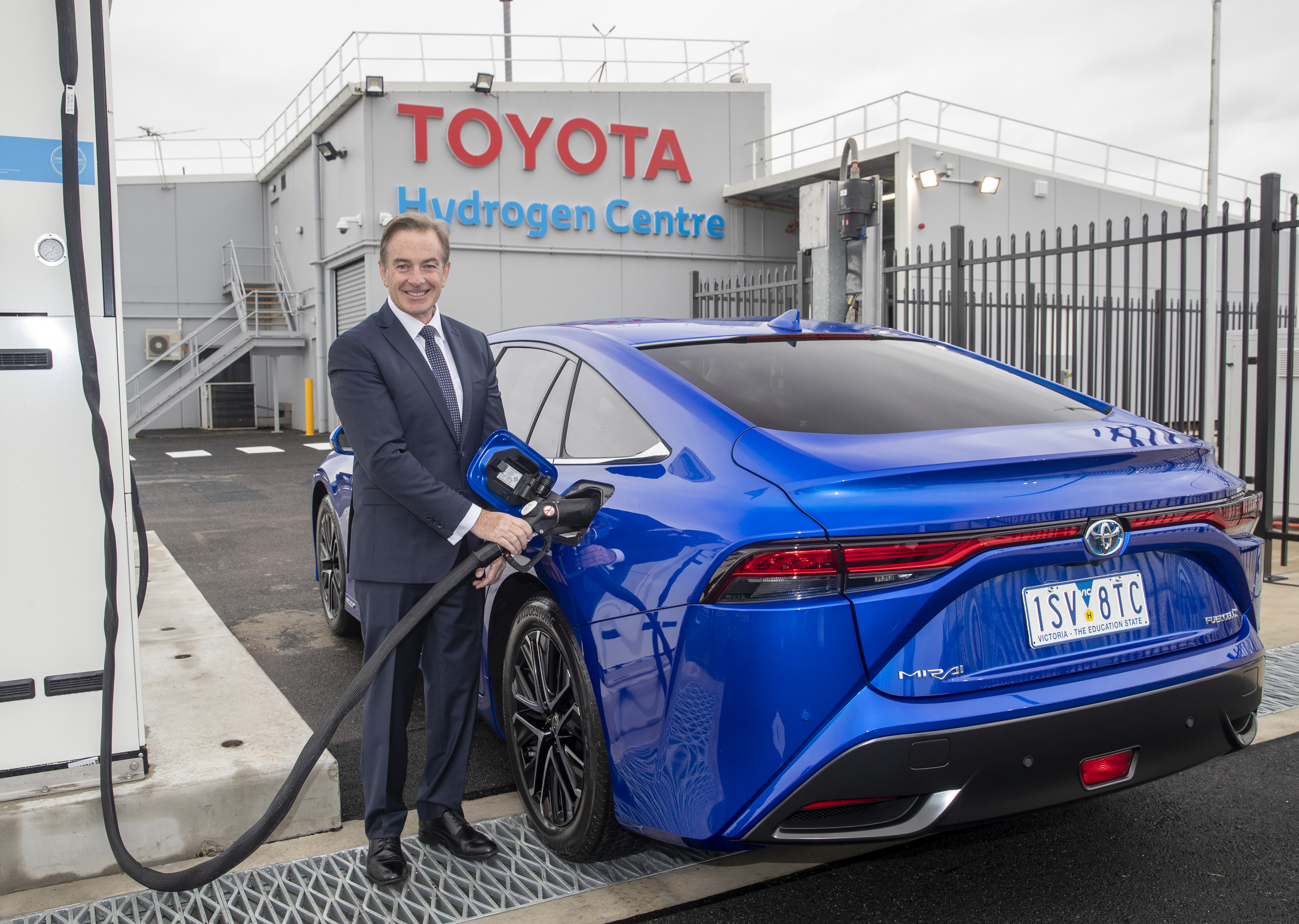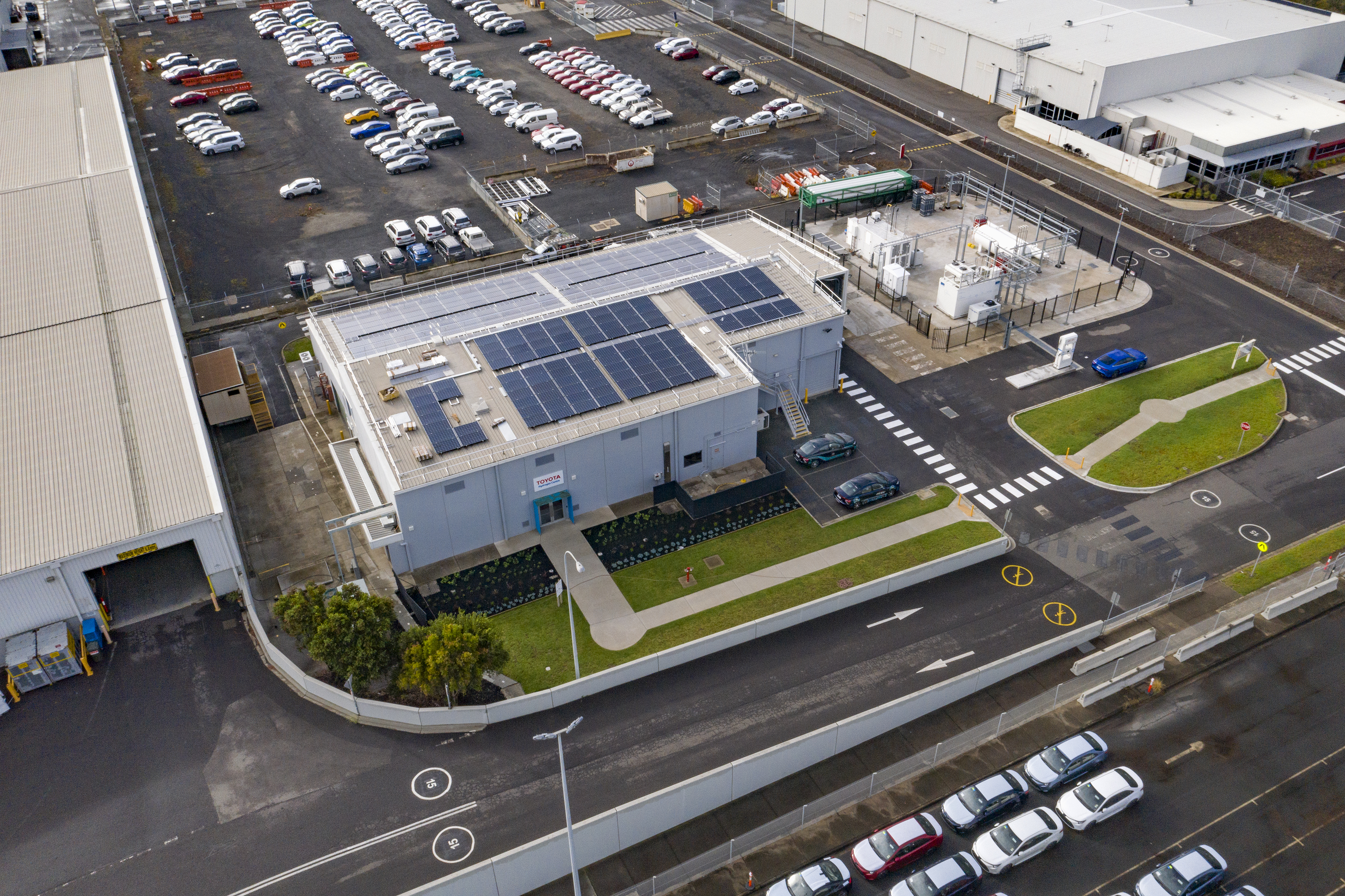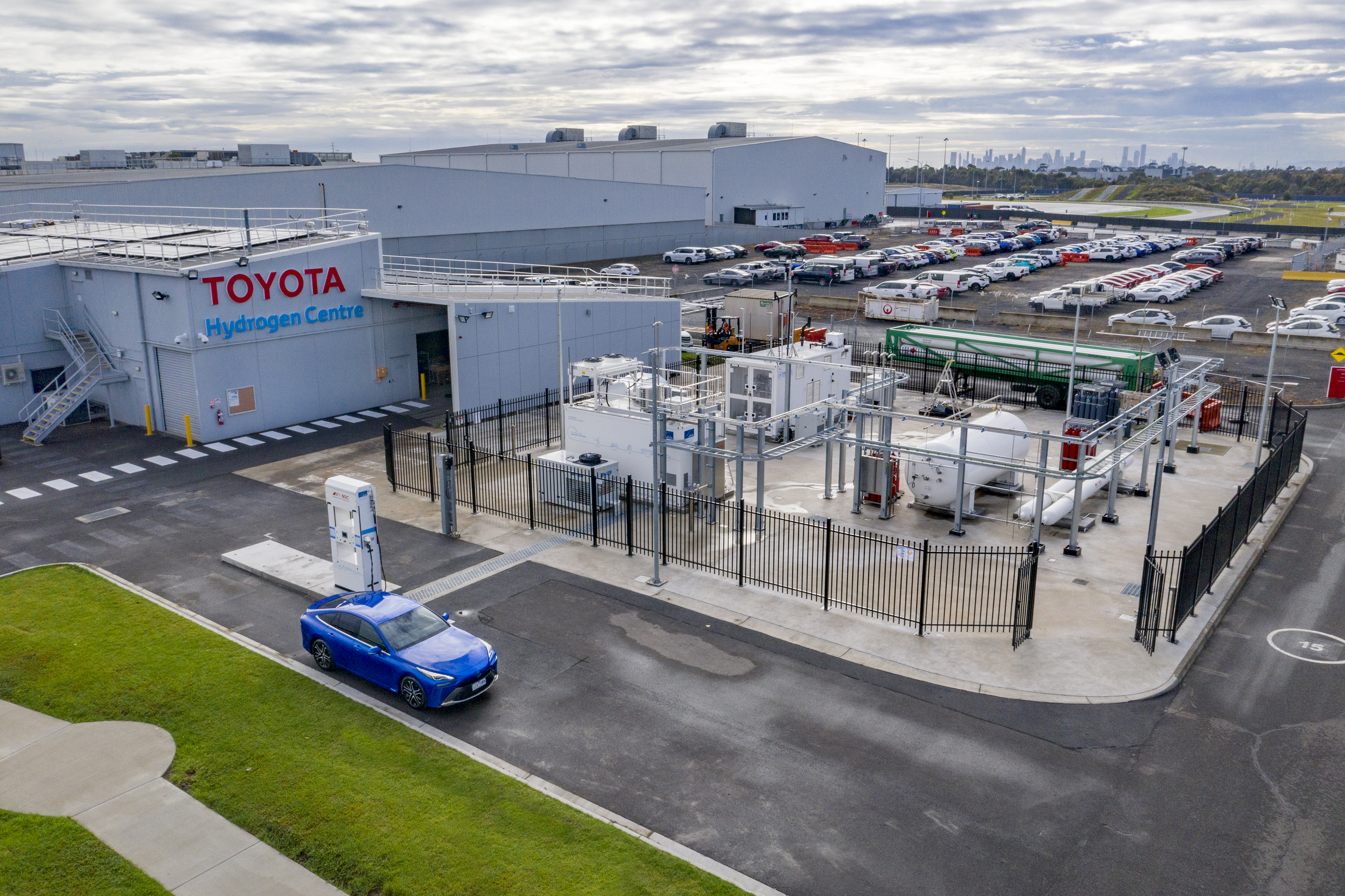The hydrogen centre is the first commercial-grade hydrogen production, storage, and refueling facility in Victoria, Australia.
Toyota has commissioned Victoria’s first commercial-grade permanent hydrogen production, storage, and refueling facility at its former manufacturing site in Altona, Melbourne on Monday, March 29.
The solar-powered hydrogen production facility will produce up to 80kg of hydrogen per day and will have a commercial-grade refueling outlet for commercial and passenger fuel cell electric vehicles (FCEV).
“Globally, Toyota is committed to achieving zero CO2 emissions from its vehicles and plants under the Toyota Environmental Challenge 2050 and the commissioning of our hydrogen refueling facility here today is an important step towards achieving that goal,” said Matthew Callachor, President & CEO, Toyota Australia.
The idea behind the new facility is to demonstrate the viability of renewably produced hydrogen as an automotive and energy fuel which will encourage further acceptance of fuel cell technology.
Sustainably produced hydrogen is the core element to fuel vehicles like the Toyota Mirai FCEV, an advanced fuel cell electric vehicle that produces no CO2 emissions requires no battery recharging, and has a range of 650km, Toyota said in a statement.
Matthew Callachor, President & CEO Toyota Australia at the opening of Toyota Hydrogen Centre. Image Courtesy: Toyota Australia.
Mr. Callachor noted as a part of this project, Toyota along with its business partners will lease 20 Mirai sedans which have been brought into Australia.
The Toyota Mirai has been sold in the markets in Japan and the US for the past seven years but the biggest challenge to its wide-scale introduction of fuel cell electric vehicles in Australia has been the lack of refueling infrastructure, and Toyota’s Hydrogen Centre will serve as an important step in the addressing that challenge.
In addition to the hydrogen production, storage, refueling, and Mirai servicing facilities, the Toyota Hydrogen Centre comprises an education centre. This centre will provide all the necessary information on how a hydrogen fuel cell works and benefits society, it will also dispel any myths around the safety and use of hydrogen as a fuel.
Hydrogen production at the facility
Hydrogen at the facility will be produced on-site by a 200kW electrolyzer that uses electricity to split water into hydrogen and oxygen components – with a capacity to produce up to 80kg of hydrogen per day.
Power for the electrolyzer is drawn from a combination of an 87kW solar array, a 100kW battery storage, and mains grid depending on what is viable at that point.
Aerial view of Toyota's Hydrogen Centre in Victoria. Image courtesy: Toyota Australia.
The hydrogen is then stored in a bank of storage tubes at medium and high pressure to be able to refuel both the fuel-cell forklifts that Toyota uses in other parts of the Altona complex and hydrogen FCEVs, as the new Mirai FCEV.
“The infrastructure which is being commissioned at this new Toyota facility will not only progress the deployment of hydrogen vehicles, which can make a major contribution to helping our transport sector navigate Australia’s energy transition, but it will also serve as a beacon to other companies looking to invest in hydrogen transport technology,” expressed Dr. Patrick Hartley, CSIRO Hydrogen Industry Mission, who attended the opening of Toyota’s Hydrogen Centre.
By Shraddha Kakade,
Asst. Editor Emerging Technology News.

